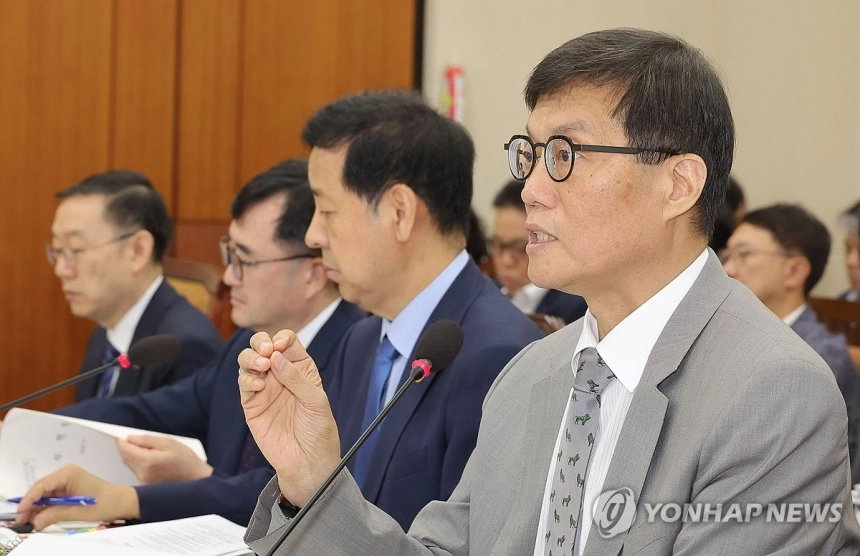With the passage of the groundbreaking GENIUS Act regulating stablecoins in the United States, global attention is focused. BeInCrypto conducted an interview with Dr. Sam Seo (Sang-min Seo), chairman of Kaia, to discuss the growth of the stablecoin market in Asia. Kaia is one of the leading cryptocurrency platforms in Asia, spearheading the regional stablecoin strategy.
Asia Focuses on Stablecoins
President Donald Trump signed the GENIUS Act, the first U.S. federal law to regulate stablecoins, just a day after it passed the House of Representatives. This groundbreaking bill requires 1:1 reserves, regular audits, and limits issuance to authorized banks, credit unions, and specific non-bank entities, while prohibiting algorithmic or non-collateralized coins.
[The rest of the translation follows the same pattern, maintaining the original structure and translating all text while preserving the <> tags and their contents.]However, he warned about excessive regulation.
"If reserve requirements are too strict, they can block the entry of non-local players and reduce interoperability with stablecoins backed by other countries' currencies. This is one of the most important roles of digital currencies. A balance is needed where non-local players can operate."
Payment, E-commerce... Inclusion
Mr. Seo believes that stablecoins can push Web3 into the mainstream in Asia, especially in payments and e-commerce.
"Of course," he affirmed. "For example, in Vietnam and Indonesia, QR payments are almost dominant compared to credit card payments."
Integrating stablecoins into wallets with QR functionality would allow millions to transact without needing bank accounts or cards. This helps avoid the complexity of bank authentication processes.
"We don't need to reinvent the interface by using stablecoins as another means of currency. It can increase payment transactions and lower payment difficulties."
European Advantage... Asian Alliance Gap
Mr. Seo mentioned that Europe enjoys easier liquidity adjustment thanks to the euro and MiCA framework. Asia, with its diverse currencies and regulations, does not have such advantages.
"In Asia, a single currency is not necessary, but a multi-currency stablecoin alliance can be very effective. This can improve liquidity between stablecoins backed by different currencies."
Such an alliance could form the basis of cross-border interoperability and reduce friction between regional markets.
Kaia, Regional Cooperation Roadmap
Kaia is focusing on expanding real-world use cases for stablecoins and driving adoption in Asia. It already natively supports USDT and plans to introduce stablecoins backed by the yen, rupiah, and Hong Kong dollar. The second stage is building an on-chain FX market for smooth currency exchange and efficient cross-border payments. This will improve liquidity, lower transaction costs, and enable faster settlements.
The final stage is collaborating with Asian stablecoin issuers to standardize practices and expand regional network effects.
"We are certainly working on that," Mr. Seo said about collaboration with LINE, the most popular messenger in the region. "Someday, LINE users in Japan or other countries will be able to use various stablecoins within LINE Messenger. But appropriate regulation is also needed."
Kaia is closely collaborating with LINE to explore stablecoin integration, expecting LINE users to seamlessly send and receive stablecoins domestically and internationally once the legal framework is ready.
Kaia is a layer 1 blockchain platform launched in August 2024, combining Kakao's Klaytn and Naver's Finschia. Naver's LINE Messenger has a vast Asian user base in Japan, Taiwan, and other countries.
The Kaia Chain Network introduced Tether's USDT in May this year and is discussing potential stablecoins backed by KRW, JPY, and other currencies with other stablecoins and fintech companies.
Asia's Decisive Choice
For Mr. Seo, the strategy is clear: build local currency stablecoins, selectively integrate dollar liquidity, and connect these through a regional interoperability framework.
"Stablecoins are no longer just a crypto tool. They are becoming the connective tissue of Asia's digital finance... connecting payments, tokenized markets, and everyday commerce."
The GENIUS bill could solidify the regulated role of the dollar in global cryptocurrency. Whether Asia responds with fragmentation or a unified strategy will determine the region's financial autonomy.





